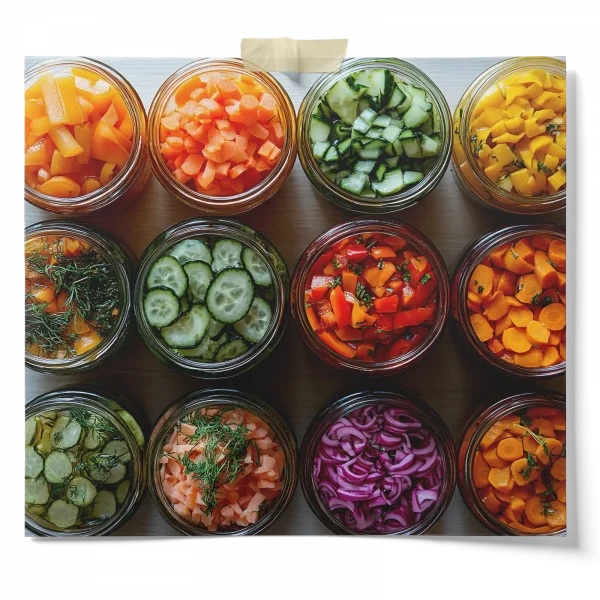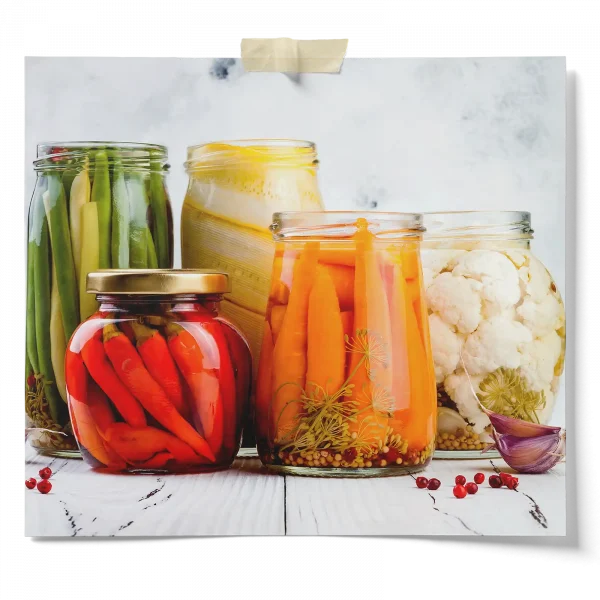
Have you ever wondered how a simple vegetable like a cucumber can become a tangy pickle packed with flavor? Well, vinegar pickling is the time-tested method behind this transformation. From grandma’s kitchen shelves lined with mason jars to trendy artisanal offerings at your local farmers market, vinegar pickling is a popular culinary technique used across cultures. But what exactly is vinegar pickling?
In this post, we’ll cover the fundamentals of vinegar pickling, explaining how pickling both preserves foods while adding unique and custom flavors. So, whether you want to preserve your garden’s bounty or experiment with new flavors in your kitchen, vinegar pickling is an easy and fun way to explore the world of preserved foods.
Vinegar pickling in simple terms is soaking vegetables in an acidic solution; but is a precise method that combines chemistry with culinary tradition to preserve and flavor. Understanding the science behind vinegar pickling can help you understand the technique and get consistent results.
The key to vinegar pickling is its acidity. Vinegar, which typically contains 4-7% acetic acid, creates an environment hostile to the growth of harmful bacteria and molds. This acidity effectively preserves the produce by lowering the pH level, making it difficult for spoilage organisms to survive. The acidity offered by the vinegar is also where you get the tart crisp tang. The result is a shelf-stable product that’s safe and retains quality for extended periods.
Vinegar pickling and fermentation are both methods of preserving food, but they differ in a few ways.

Vinegar pickling involves submerging vegetables in a vinegar-based brine, which gives the food a tangy flavor and preserves it through the acidity of the vinegar. This process is quick and can be done in a matter of hours or days.

On the other hand, fermentation relies on natural bacteria to convert sugars in the food into lactic acid over time, which also preserves the food, adding flavor and nutritional value.
Fermentation takes longer, from a few days to weeks, and results in a more complex product with the added benefit of gut-healthy probiotics. While vinegar pickling offers a sharper, more immediate taste, fermentation provides a deeper, more nuanced flavor.
Vinegar pickling requires a few basic ingredients, each playing a crucial role in the process:
You’ll need a jar—mason jars work best—along with lids to seal them. You’ll also need basic kitchen items to prepare the produce, such as a cutting board, a knife or mandolin, and any other tools you find helpful in prepping your ingredients.
The vinegar pickling process is straightforward and involves just a few steps. Here is a high-level overview of the process, followed by a few recipes to get you started:
Prepare the Produce: Clean and cut the fruits or vegetables to your desired size, removing any blemishes or damaged areas.
Seal and Store: Seal the jars and let them cool before storing them in a cool, dark place to allow the flavors to develop.
By understanding these elements and steps, you can confidently start your vinegar pickling journey and enjoy homemade pickles with just the right balance of flavor and preservation.
